Rameau: Les Paladins (Christie)
Introduction
A very modern multimedia-based performance of Rameau`s penultimate opera in a live performance from Paris in 2004.
Rameau created an almost pantomime-like feel to this piece, which flopped when it was first performed, not surprisingly as the aristocratic Parisian audiences knew precisely what they liked, and what they liked was what they had had for decades. Anything new was frowned upon, even when it was a composer caricaturing himself, and all the styles of music with which he had ever been involved.
Rameau however, began his composing career writing for street plays, and was quite aware of the public`s dislike of the constant operatic Greek mytholical heroes and heroines which were blatant attempts to show the aristocracy as gods.
The story then is rather strange, but doesn`t delve into the Greek mythology at all, apart from one androgenous fairy named Manto, but that`s not especially Greek I`m sure.
Basically, the plot revolves around Argie and Nérine, who are kept prisoner by the rather nasty character of Anselme. Anselme is madly in lust with Argie (as close as he can get to love). Argie doesn`t want to know, but is waiting to be rescued by Atis (the paladin of love - seemingly) who she really loves.
Meanwhile, Orcan, the gaoler, quite fancies Nérine, who decides to flirt outrageously with him in an attempt to get the keys of the prison.
Atis has rescued Manto from being killed while he was in the form of something or other and has promised Atis he will find love with Argie. To help this plan along, Manto himself seduces Anselme (fairly shocking at the time, as the score specifically says the part should be sung by a man, playing a male but dressed as a woman), leaving the true lovers to run off together.
At least, I think that`s what happened.
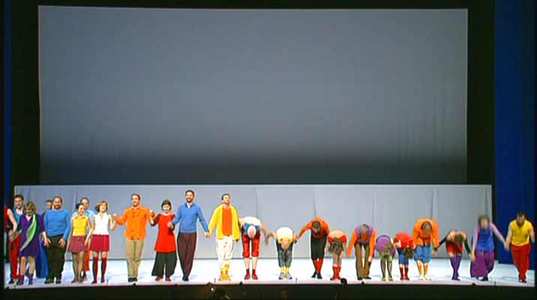
Video
There is absolutely nothing wrong with the NTSC 16.9 anamorphic picture. All stage colours are vivid (although there is probably some dulling down of the `live` effect the audience may have had).
The accompanying documentary is full-screen.
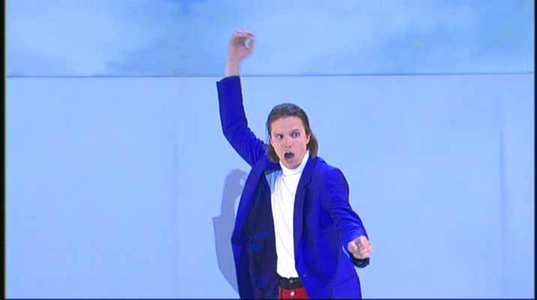
Audio
Sound is equally fine, being presented in LPCM stereo or DTS. The balance between the instruments and singers is admirable, but this is to be expected with such a group as Les Arts Florissants.
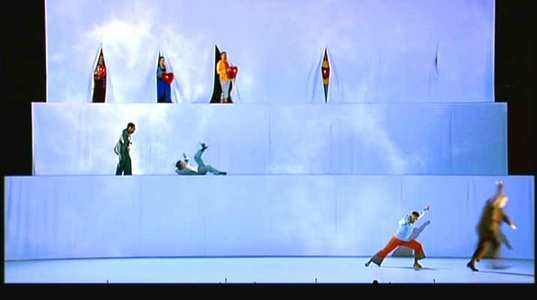
Features
Extras come in the form of a great documentary on disc 2, `Baroque that rocks!` which lasts for about an hour, and explains alsmot everything you want to know about the plot, how the singers came to learn about their characters and how the music was created. What it doesn`t tell you however, is tell you much about the multimedia element of the production, which is a great shame.
The booklet explains some more on the creation of the opera itself, within its historical context and also
Contains the poem `The Little Dog` by Jean de Lafontaine, from which the opera was developed.
Usual subtitles and translations abound.

Conclusion
I think his is definitely something I would have loved to have seen live despite the caveat at the end of the review, and also because the DVD medium, even with all its advantages, can never do full justice to what seemed to be a fantastic merging of music, dance and video-trickery.
French music at this time was heavily influenced by the dance form, and operas were rarely without sections purely for dancers, and Rameau was a master of writing tunes which are annoyingly foot-tapping.
This production uses choreography by José Montalvo (also the Director) and Dominique Hervieu throughout, with character doubles often dancing next to their singing counterparts, expressing their mood and feelings at the time. When this isn`t enough, the video screens along the back of the stage burst into life, showing the characters leaping up and down on trampolines, huge rabbits (just the rabbits - noone is leaping up and down on them), peacocks doing what they do best with their tails.
I was highly impressed by the singers` dancing as well, as they are often caught up in the meleé and show themselves up to be great movers, in particular Laurent Naori (Orcan), and it might just me me, but Stéphanie d`Oustrac`s (Argie)legs apparently go on for ever.
And then of course, there`s the music.
The orchestra of Les Arts Florissants play wonderfully, and from the sounds of it, can follow William Christie`s direction perfectly (not sure I could myself though).
The singing is splendid all round, with special praise going to Topi Lehtipuu (Atis) who has one of those pure high-tenor voices which are not sullied by over the top warbling.
It made me think that perhaps, the music, and much of it is rather good, may have been lost in the excitement of trying to be clever. You can certainly miss a lot of subtleties if you are suddenly faced with modern dancing, several huge rabbits and naked people running across the screens in front of you, so perhaps this DVD release is actually beneficial to Rameau, more than it is to the production.
All great fun anyway!
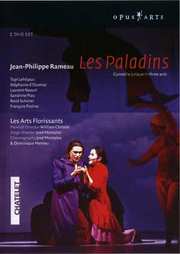
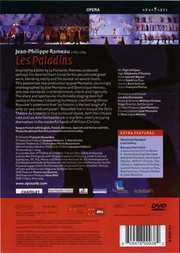



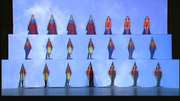
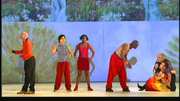
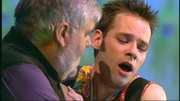
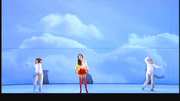
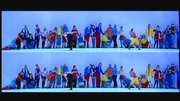
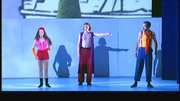
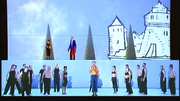
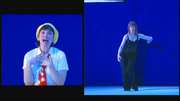
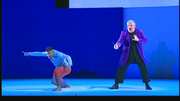
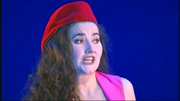

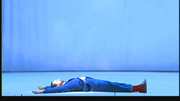
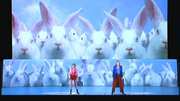
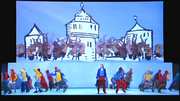
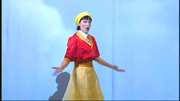
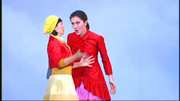
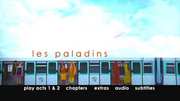






























Your Opinions and Comments
Be the first to post a comment!